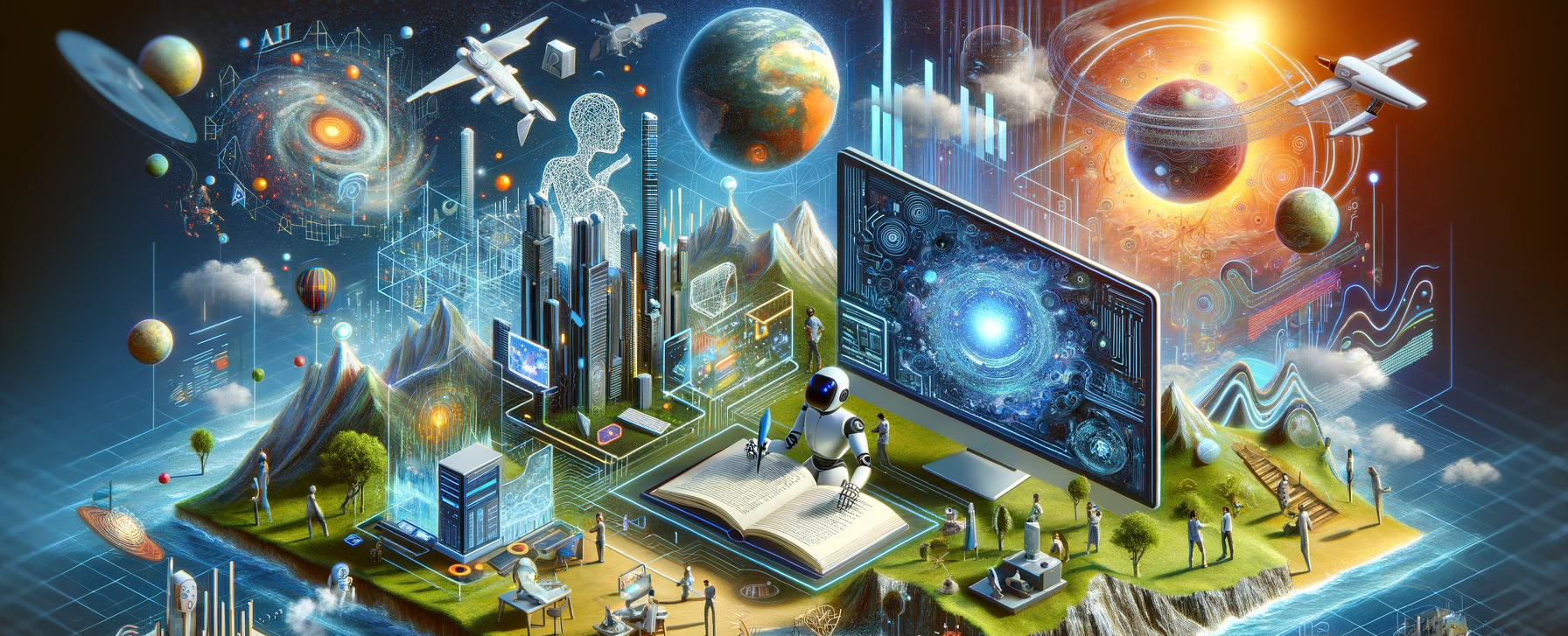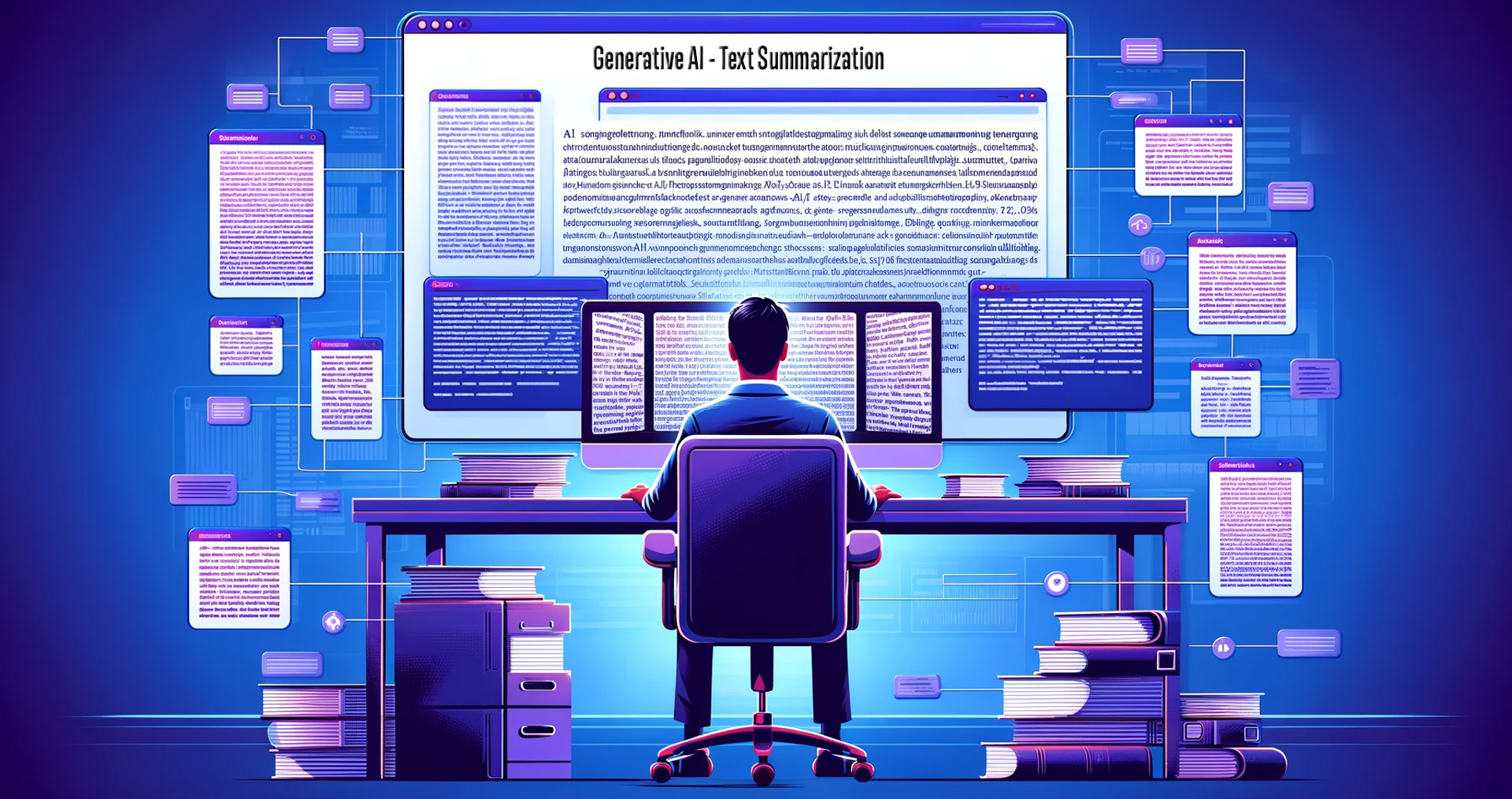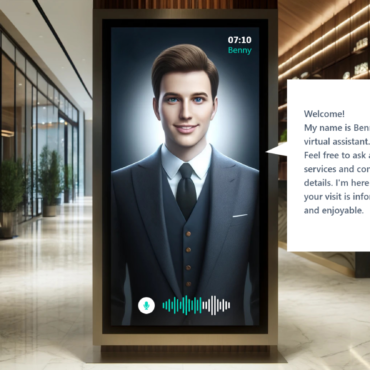Generative AI - 6 Use Cases
Generative AI stands out as a game-changer, offering a spectrum of applications that can change how companies operate and innovate. Despite its growing prominence, the practical applications of this AI technology often remain underexplored by business professionals. This article seeks to bridge this gap, presenting a selection of Generative AI use cases. Our discussion aims to not only enlighten but also inspire you to identify and leverage the right Generative AI for your business. As we navigate through these diverse applications, you’ll gain a clearer understanding of how Generative AI can be a tool in driving efficiency, creativity, and strategic growth in your business endeavors.
What is Generative AI?
Generative AI, simply put, is like a creative and intelligent tool for businesses. It uses advanced technology to analyze existing information and then creates new, original materials based on that data. Think of it as a smart system that can write reports, design products, or even come up with new ideas, all tailored specifically to your business’s needs.
Models like OpenAI’s Dall-E and Stability AI’s Stable Diffusion, utilizing diffusion models, enable businesses to quickly produce diverse and high-quality visual content. This versatility is crucial for marketing and advertising, where engaging and varied content is always in demand.
Text generation is another notable application and uses Large Language Models such as GPT-3 and GPT-4, which are grounded in deep learning and natural language processing, playing a crucial role. These models analyze extensive text data to learn language patterns, enabling them to replicate various writing styles and tones. They can take a prompt or initial text and expand upon it, generating new, contextually relevant text that aligns with the ongoing narrative or theme.
For business professionals, Generative AI is a powerful ally. It can sift through vast amounts of data, spot trends, and then generate solutions or suggestions that are unique to your company. It’s not just about finding answers; it’s about creating new opportunities and ideas that can help set your business apart from competitors. Imagine having an assistant that not only understands your business inside and out but also helps you innovate and stay ahead in your industry. That’s the power of Generative AI for businesses.
Exploring real-world applications for Generative AI

With this understanding of generative AI, we will now look at six specific use cases that illustrate its versatility and transformative potential in real-world applications.
1. Text summarization
Generative AI in text and document summarization is a powerful tool for business users that streamlines the processing of large amounts of information. By using advanced AI models such as GPT-4, this technology can quickly take long reports, detailed market analyses and comprehensive documents and brings them into concise, easily digestible summaries. This not only saves valuable time, but also ensures that key insights and data points are summarized efficiently, enabling rapid decision-making. Whether it’s summarizing complicated legal documents or condensing voluminous research papers, generative AI gives companies the ability to effectively manage information overload, improving productivity and decision-making processes.
Explore our Client Story on streamlining information summarization with a GPT-powered solution: Click to read more

2. Automating Information Extraction
Advancements in Generative AI, exemplified by models such as GPT-4, specialize in navigating vast swathes of data and content, adeptly pinpointing and extracting essential details—ranging from dates, financial metrics, names, to pertinent terms—embedded within extensive documents, contracts, emails, and online resources. This capability stands as a linchpin for streamlining data management across diverse sources. By automating the information extraction process, these AI models not only accelerate data retrieval but also elevate precision while minimizing the potential for human error. This refined approach notches up the pace at which businesses can access and analyze crucial information, fostering astute decision-making and driving operational efficiency to new heights.
Explore an example of automating information extraction with our real Use Case Story on “Streamlining Information Extraction with GPT-Powered Solution”: Read More
3. Intelligent assistant for different tasks – Copilot
As Generative AI continues to evolve, it is paving the way for companies to adopt their own personalized Generative AI assistant. These advanced assistants can handle a variety of tasks, such as searching for documents, making summarizations of their own documents, composing texts, or drafting emails. They are able to answer directly to given questions while accesing the complex data of a company. Those GenAI assistants are also called Copilots, because they help with the daily tasks or processes and accompany the users while working. Those copilots can be adapted to different scenarios, based on the need of a company. One of the most remarkable examples of Copilots is Microsoft Copilot 365, which adds GenAI superpowers to the 365 suite. It enables for example creating notes from MS Teams Calls, generating queries in Excel by describing what we would like to achieve or creating drafts of documents in Word, based on the content of a few documents, which we have access to in the company’s’ SharePoint.
Want to know more about Generative AI Copilot assistants? Read More here
4. Enhancing developer productivity in code generation
Generative AI is also playing a crucial role in software development, particularly in enhancing developer productivity through automated code generation. This technology leverages the power of AI to interpret developers’ instructions and comments in natural language within integrated development environments (IDEs), facilitating the generation of code recommendations.
The process involves AI models, like GPT-3/GPT-4, analyzing the context and intent of the developer’s input. By understanding the nuances of the programming task at hand, these AI models can suggest relevant code snippets, streamlining the coding process, but also finding errors in code. This integration of AI into the development workflow represents a significant shift towards more efficient and intelligent coding practices.
Solutions such as CodeWhisperer, GitHub Co-Pilot, and Tabnine exemplify the application of Generative AI in code generation. These tools, while varied in their specific features and capabilities, all share the common goal of enhancing coding efficiency. They offer real-time recommendations and insights, allowing developers to focus on more complex and creative aspects of software development.

5. Understanding emotions in texts for sentiment analysis and text classification
Generative AI, leveraging the principles of Natural Language Processing (NLP), can also understand emotions in text. This development allows AI models to detect and categorize the emotional tone of written communication as positive, negative, or neutral or create texts in defined tone, which can be for example positive/negative, professional etc.
Models like GPT-4, trained on expansive datasets that include a wide range of emotional expressions, are at the forefront of this advancement. Their extensive training enables them to recognize subtle emotional cues in language. For example, in customer service chatbots, Generative AI can identify a customer’s frustration or satisfaction from their message. The chatbot can then respond in a manner that aligns with the customer’s emotional state, such as expressing empathy in response to a complaint or sharing in the customer’s enthusiasm. But there are more possibilities as to how GenAi and NLP could be applied based on the specific needs of a company.
This ability to understand and respond to emotional nuances in text can transform how businesses interact with customers, offering a more personalized and empathetic communication experience. It demonstrates how Generative AI, combined with NLP, is not only processing language but also enhancing the emotional intelligence of digital interactions.
6. Enhanced Content Creation for Blog Writers and Beyond
Leveraging models like GPT-4, alongside the diffusion models for visuals, Generative AI is proving to be an invaluable asset for Content Writers in business blogging and beyond. This technology aids in crafting engaging, well-structured blog posts, and also in generating compelling visual content, ensuring a perfect alignment with a company’s audience and industry specifics. Content Writers can harness Generative AI to flesh out ideas, integrating key themes, essential keywords, or outlines, while the AI assists in developing these into coherent, original textual and visual content. This collaborative process not only streamlines the creation of both text and visuals but also guarantees the production of high-quality material, essential for an effective online presence and SEO.
More innovative use cases
The use cases highlighted in this article are just a few examples from the vast and evolving world of Generative AI. Beyond visual content generation, text creation, copilots, code generation, and sentiment analysis, there lies a wealth of other applications for all kind of industries waiting to be explored. As technology advances, we can expect to see even more innovative uses of Generative AI across different sectors.
Build you own solution

Even though building a first demo based on available models such as GPTs can seem a quite straigtforward task, the process of building a production-ready generative AI-based solution is a complex and challenging task. For businesses and companies considering building their own generative AI solution, it’s recommended to collaborate with AI experts. The complexity of these models often requires specialized knowledge and experience in data engineering, machine learning and data science. Partnering with professionals who have a deep understanding of AI and its applications can significantly streamline the development process and enhance the quality, reliability and effectiveness of the final solution.
Read More about how to get your own Generative AI solution here: Link
Who are we?
At theBlue.ai we use many years of experience working on AI projects, including working with the generative AI architectures, to find the best-suited solutions to your business challenges. We can help you with data optimization and integration of the systems.
Our team has a deep understanding of the technical aspects of prompt engineering and Generative AI, including the use of Natural Language Processing (NLP) and Machine Learning (ML) to create more personalized and effective solutions. We can help you leverage the power of Generative AI to generate text, images, and other media that are tailored to your specific needs and objectives.
To ensure the success of your Generative AI implementation, we work closely with you to understand your business goals, data requirements, and technical infrastructure. We then develop a customized solution that meets your specific needs, leveraging the latest tools and techniques in AI.
Whether you are looking to optimize your customer experience, streamline your operations, or develop new products and services, our team can help you unlock the full potential of Generative AI. Contact us today to learn more about how we can help you achieve your business goals through AI-powered solutions.





